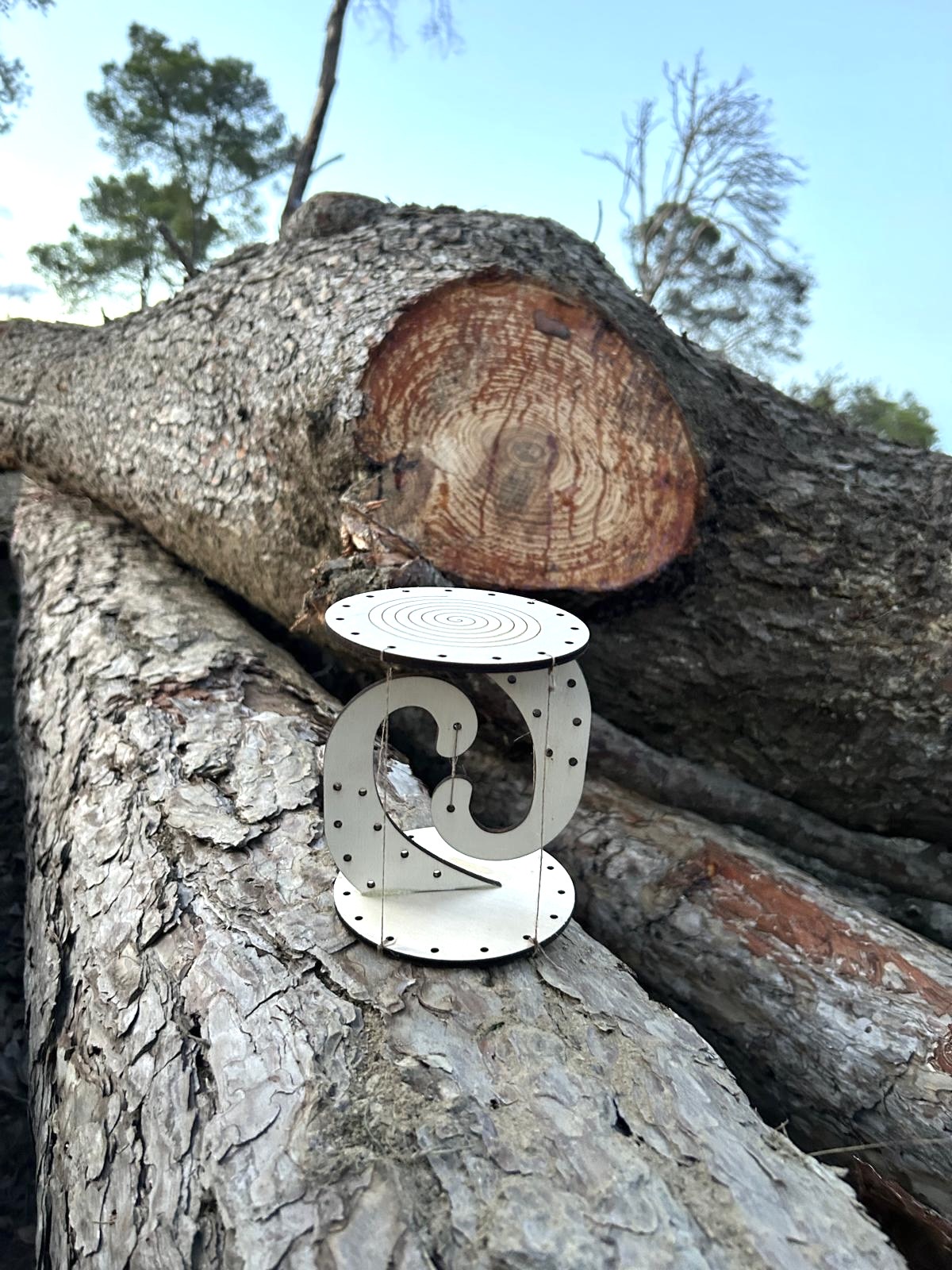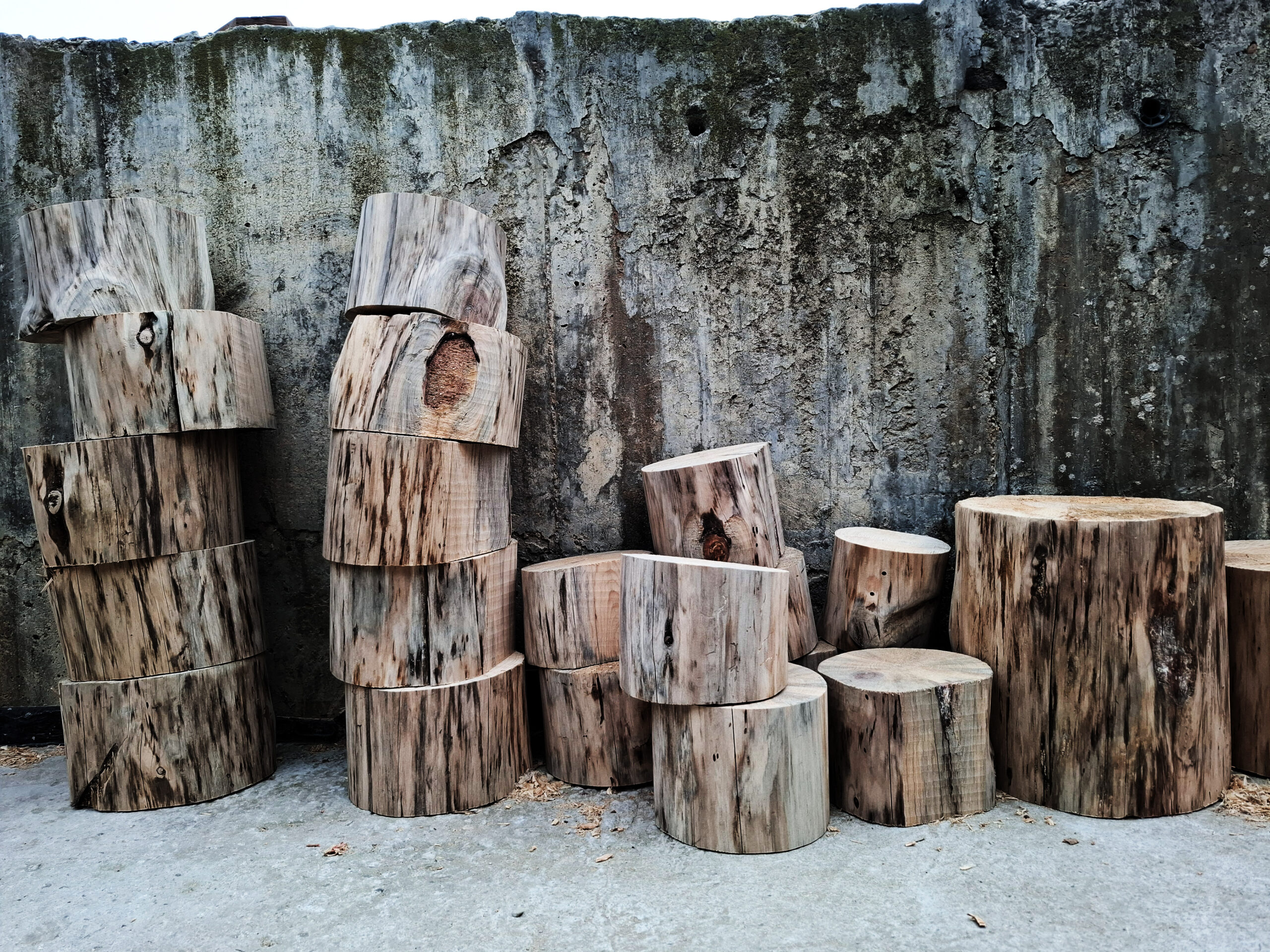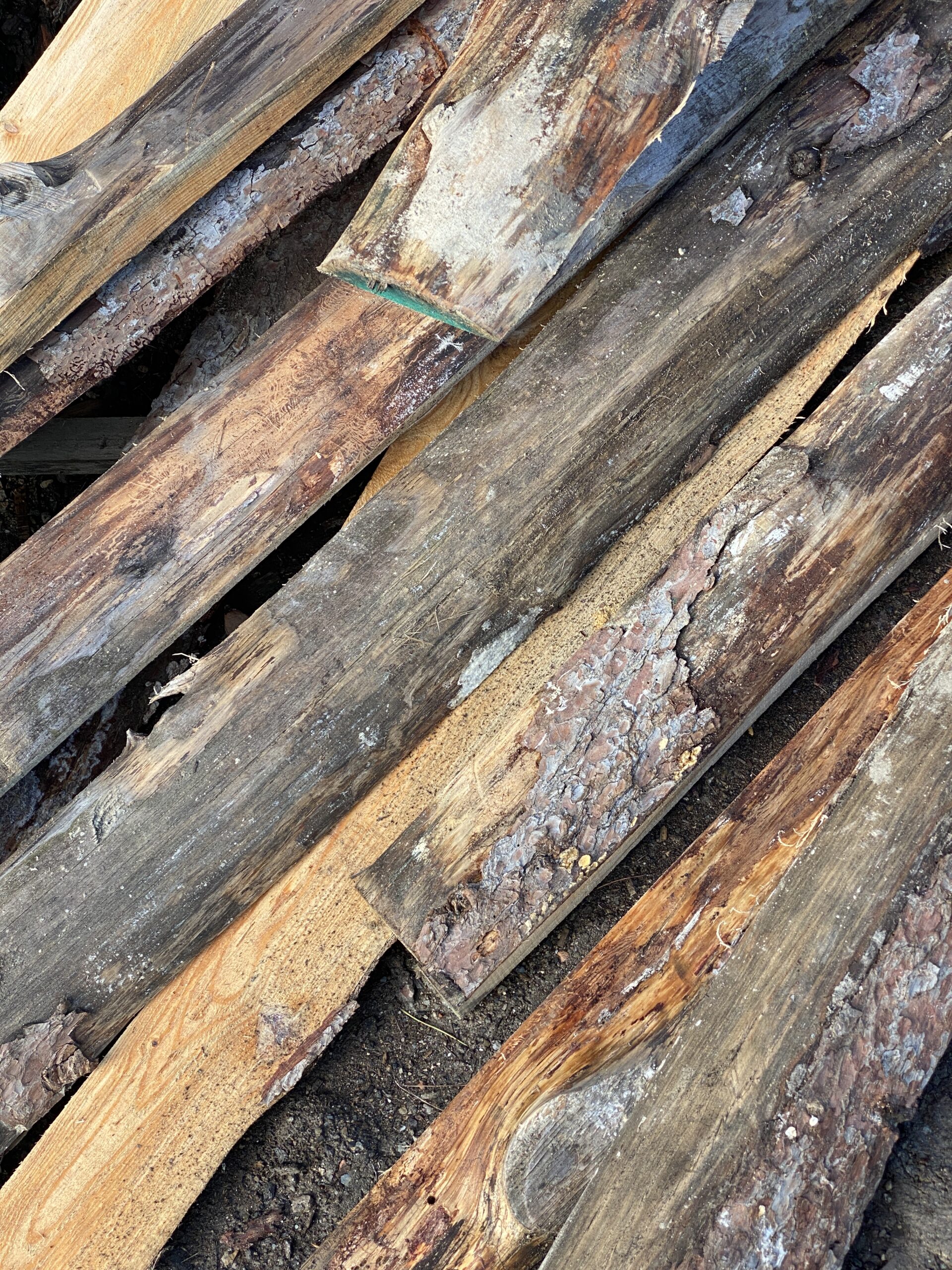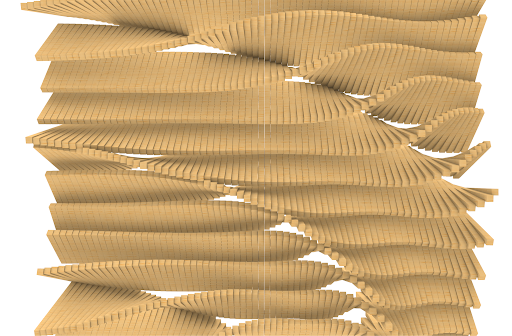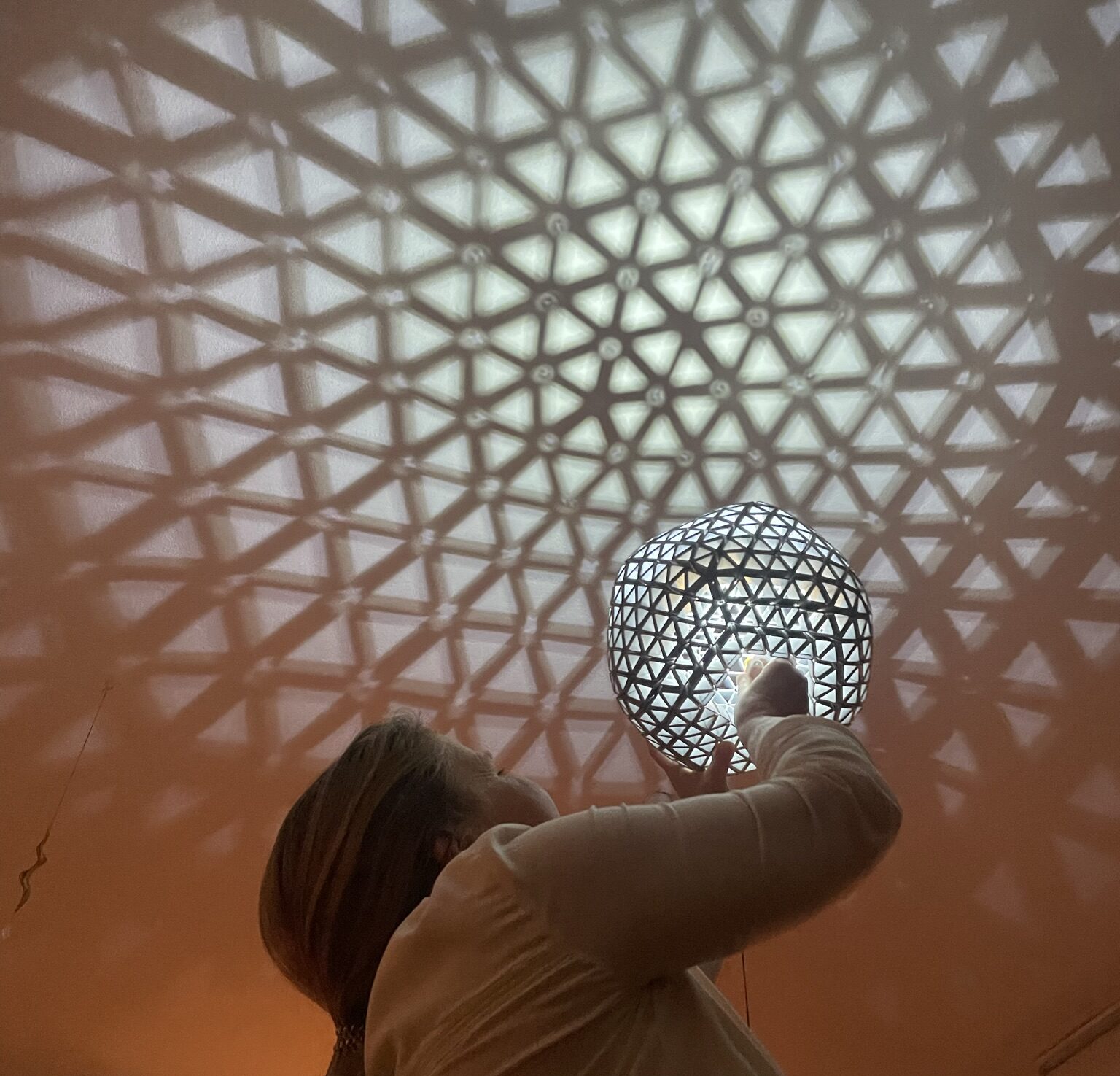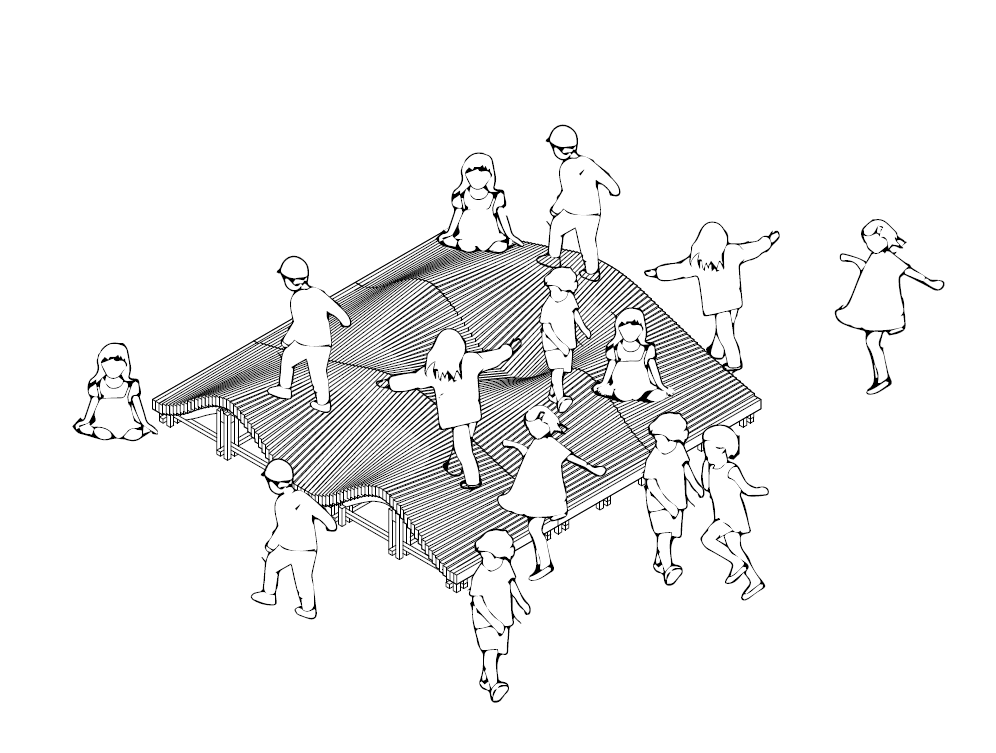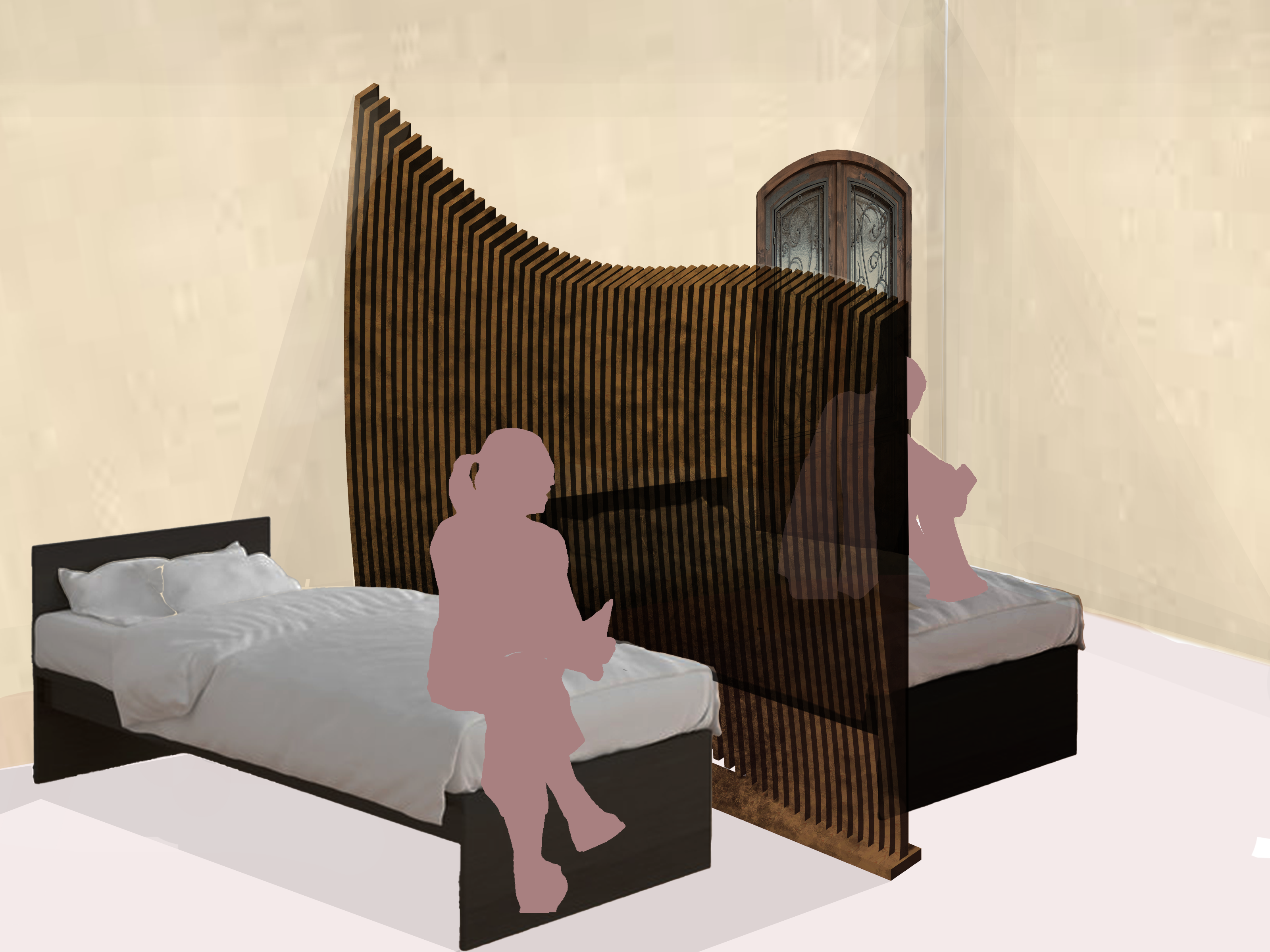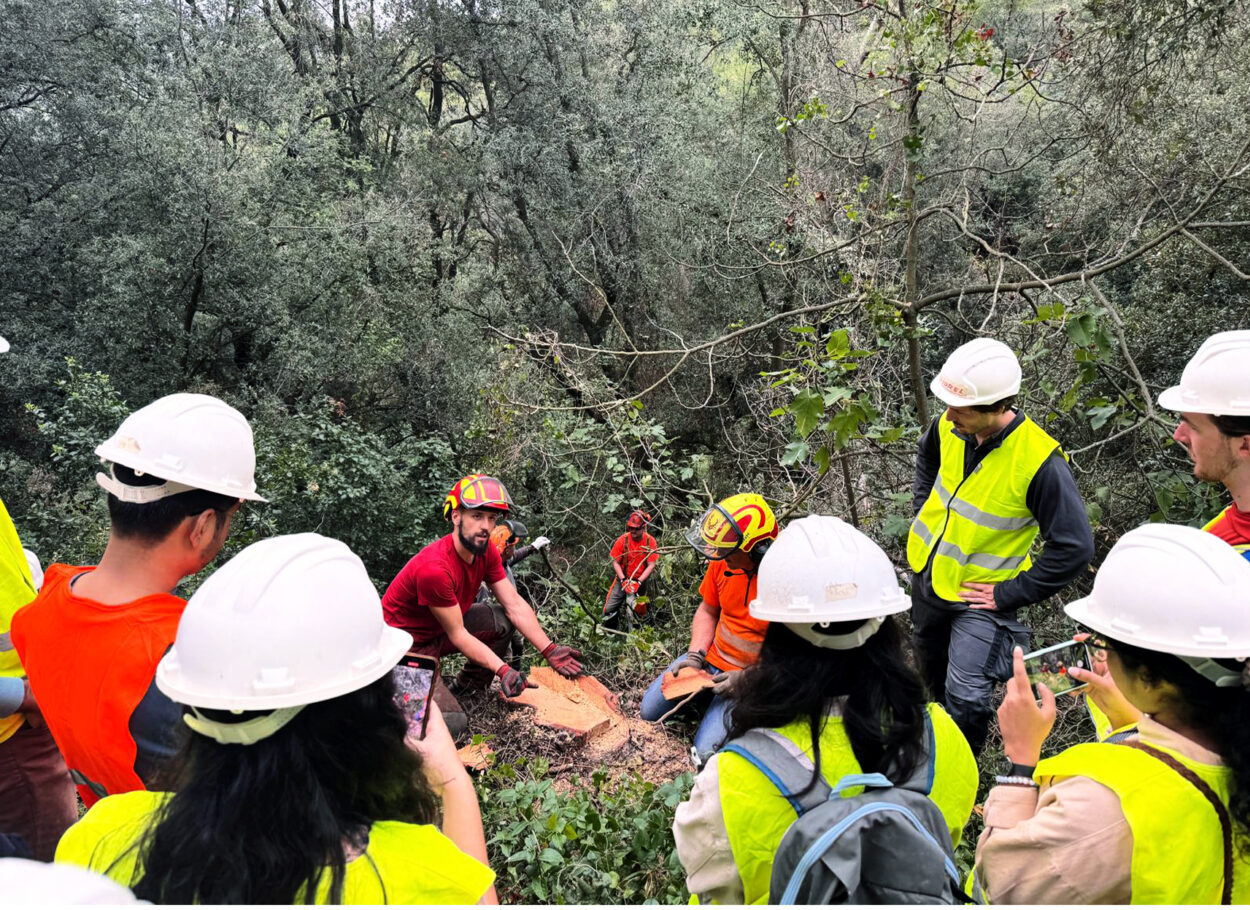The Master in Advanced Ecological Buildings and Biocities (MAEBB) postgraduate program is an 11-month immersive academic program focused on learning how to design and build a new generation of buildings and cities to respond to the planet’s emerging climate challenges. The program is carried out in Valldaura Labs, in Barcelona, a 135 He property located in the Collserola forest. Here, students will live and work surrounded by nature while using the most advanced technologies and design techniques in the pursuit of what is also IAAC’s long term initiative, to create self-sufficient and ecological environments.
The Interstice_
For the class Advanced Digital Tools we designed a partition wall for the shared rooms at the Valldaura Campus. –THE INTERSTICE– A purposeful wall where the curve effortlessly transitions between its dual roles as a bench on one side and a shelf on the other balancing division and connection. REFERENCES We took inspiration from parametric … Read more
First Steps into Fabrication
In the first phase of the discipline of Collaborative Design Studio, our group reimagined the rooftop playground of the primary school of Colegi Mare De Deu dels Angels in Barcelona, focusing on enhancing the children’s well-being. Through site visits, movement mapping, and participatory workshops with students, parents, and teachers, we identified key needs such as … Read more
Computational Design Seminar: Cellular Partition Wall
Reuben Diamond & Pragyna Thondapu Our Goal: To create a parametric partition wall shelving system for a bedroom within the Valldaura Labs student quarters, inspired by nature. Partition Wall Concept: Cellular CascadeWe designed a partition wall inspired by nature, achieving an organic form and a natural aesthetic while ensuring structural integrity. The wall stands independently … Read more
Computational Design Seminar: Truchet wall
Truchet tiles are a type of square tile with a pattern on each of its four sides. What makes them dynamic is that they can be arranged in a grid-like pattern, and each tile’s orientation can be rotated independently. This results in a constantly changing pattern, as the tiles can be rearranged and rotated to … Read more
Yin yang tension stool
The Art of Balance: Prototyping a Tensegrity Stool For our latest project at Valldaura, we set out to design and build a stool that defies convention. The result? A tensegrity stool that creates the captivating illusion of a floating seat. What is Tensegrity? Tensegrity—short for tensile integrity—is a structural principle that relies on a balance … Read more
Log seats-The Stumpies
The project “Log seats” explores the idea of using cut-wooden logs as playground elements for secondary school students to help create better playground environment. Objective The main aim of the project was to fabricate a seating element in the secondary school playground of Colegi Mare de Déu dels Angels in the city of Barcelona. The … Read more
Computational Design Seminar
As the final assignment for the discipline of Advanced Digital Tools, we were asked to create a dynamic partition wall in one of our dormitoriesusing computational design principles. The chosen one was room nº 8 of Valldaura Labs, with an area of 9.48m². To allow free movement for both dwellers, the wall was designed to … Read more
Waste Wood Reworks Series: Stools
As my first woodworking project at Valldaura, I aimed to choose a simple design to familiarize myself with the tools and the process of working with this unique material. Being new to this, I was eager and excited to begin. The project began with my fascination and appreciation for the natural qualities and weathering of … Read more
Translucent Snoring
The Assignment to build a parametric partition wall suites the needs for more privacy in our shared rooms in Valldaura. The problem that we wanted to solve was to create a partition wall that provides privacy and acts as a sound diffuser while letting daylight from the window passing through. Approach We came up with … Read more
Design and Fabrication 1 Trimester
The excitement was immense after nearly two weeks of living in Valldaura, as we were finally about to use the Fablab and all its machines. However, the excitement dimmed slightly when we learned that the CNC machine wouldn’t be operational for at least a month. This meant we wouldn’t be able to produce our stool … Read more
DESIGN AND FABRICATION
GRASSHOPPER SCRIPT: SINGLE STRIP SINGLE STRIP SUPPORT OVERVIEW RIBS BREAKDOWN CNC PROCESS VERTICAL MEMBERS AND ADDITIONAL SUPPORTS VERTICAL MEMBERS AND ADDITIONAL SUPPORTS: BREAKDOWN PROCESSING WOOD FABRICATION
Computational Design Seminar : Parametric Partition Wall
Location Valldaura Labs, Dorms Inspiration Parametric wall designed by Denis Homyakov Design Concept The concept was to design a screen that could double as a shelf while also offering privacy. Additionally, we aimed to create a unique design on each side, given its function as a partition wall. Pseudo Code Grasshopper Script Script to Surface … Read more
Computational Design Seminar
Dynamic Partition Wall Inspiration Design Process – Iterations In terms of design, we aimed to design curvature, not just along the vertical faces of the panels, but along the horizontal planes as well to add more dimension to the structure. Our goal was to create curvature in both dimensions for a more dynamic structure, which … Read more
Sustainable Forest Management
Objective Sustainably harvesting trees through single-tree selection system. The harvested trees are then dried, cleaned, and processed for various designs throughout the course of MAEBB at Valldaura Labs. Single-Tree Selection System: The single-tree selection system is a sustainable forestry management practice where individual trees are selectively harvested from a forest, rather than removing all trees in … Read more
Nature as Product
Wark reflects on how modern nature tourism often prioritizes “second nature”—human-made environments—over authentic nature. On her family trip to Mount Zion, the park’s vast canyons and rock formations inspire awe, but this grandeur is soon filtered through rituals like taking selfies. Wacker’s RV transforms the wild into a comfortable, controlled space, making nature feel familiar. … Read more






